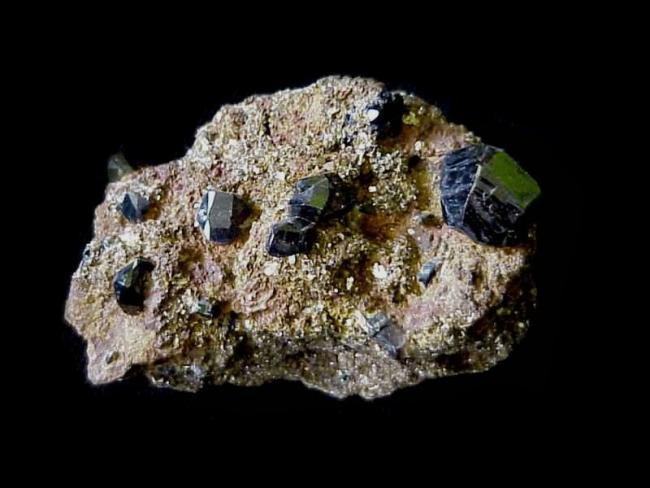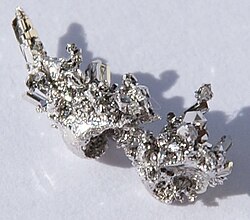Tin
Tin bonds readily to iron and is used for coating lead or zinc and steel to prevent corrosion. In 2006, about half of tin produced was used in solder. The rest was divided between tin plating, tin chemicals, brass and bronze, and niche uses.

Cassiterite - SnO2
Cassiterite crystals in a matrix of mica and quartz from Elsmore, New South Wales, Australia
Tin price: 12 months
Click on CHART to view recent price trends

Links to tin supply and demand

Links to tin supply and demand
List of base metal stocks with latest financial data
Year of Estimate: 2009
Major companies mining tin
Yunnan Tin Company Ltd is the largest tin producer in China and reportedly in the world with companies in Malaysia, Thailand and Indonesia, producing more than two-thirds of the world's tin.| Rank | Country | World Mine Production, By Country (Metric tons) in 2009 | |
|---|---|---|---|
| 1 | China | 115,000 | |
| 2 | Indonesia | 55,000 | |
| 3 | Peru | 37,503 | |
| 4 | Bolivia | 19,273 | |
| 5 | Brazil | 13,000 | |
| 6 | Congo, The Democratic Republic Of The | 9,400 | |
| 7 | Viet Nam | 3,500 | |
| 8 | Malaysia | 2,380 | |
| 9 | Australia | 1,400 | |
| 10 | Russian Federation | 1,200 | |
| 11 | Rwanda | 850 | |
| 12 | Lao People's Democratic Republic | 700 | |
| 13 | Myanmar | 672 | |
| 14 | Nigeria | 180 | |
| 15 | Thailand | 120 | |
| 16 | Portugal | 30 | |
| 17 | Burundi | 21 | |
| 18 | Mexico | 15 | |
| 19 | Niger | 10 | |
| 20 | Uganda | 2 | |
Major companies mining tin
- Yunnan Tin Company Ltd mines in China and has a 33 percent stake in Australian tin explorer YTC Resources Ltd.
- Malaysia Smelting Corporation with a combined production of 58,251 tonnes of tin metal from its Malaysian and Indonesian smelting operations in 2005 maintains its position as the world’s largest supplier of tin metal and tin based products, having contributed about 18% to the world’s production for two years’ consecutively.
- PT Timah in Indonesia is an integrated tin mining company with a capacity of 50,000 tonnes per year.
- PT Koba Tin, Indonesia's second biggest producer, produces 25,000 tonnes a year of tin. It is an integrated mining company involved in exploration, mining, processing, smelting and marketing of tin.
Tin mining and exploration in Africa
- Kivu Resources Limited is active in the eastern DRC and Rwanda. Historically, the area was an important tin and tantalum producer. Kivu Resources, through its wholly owned local companies (Metal Processing Association SARL in Rwanda, Central African Resources SPRL and Mining and Processing Congo SPRL in the DRC) will hold a number of assets in the DRC and Rwanda including a management agreement with SAKIMA, a state owned company, in the DRC to manage tin and tantalum production from small scale miners; an option to acquire an 80% shareholding in SAKIMA's mining permits; a joint venture with the government of Rwanda on the Gatumba mining permits; as well as a number of prospecting permits in the region. A consortium consisting of EDIN Mining Limited, a mining investment company domiciled in the British Virgin Islands, Ireland based Coronation Capital Limited and Metmar Limited will acquire a 50% stake in Kivu Resources. The consortium has an option to increase its shareholding in Kivu Resources to 70%.

![[Most Recent Quotes from www.kitco.com]](http://www.kitconet.com/images/sp_en_6.gif)


